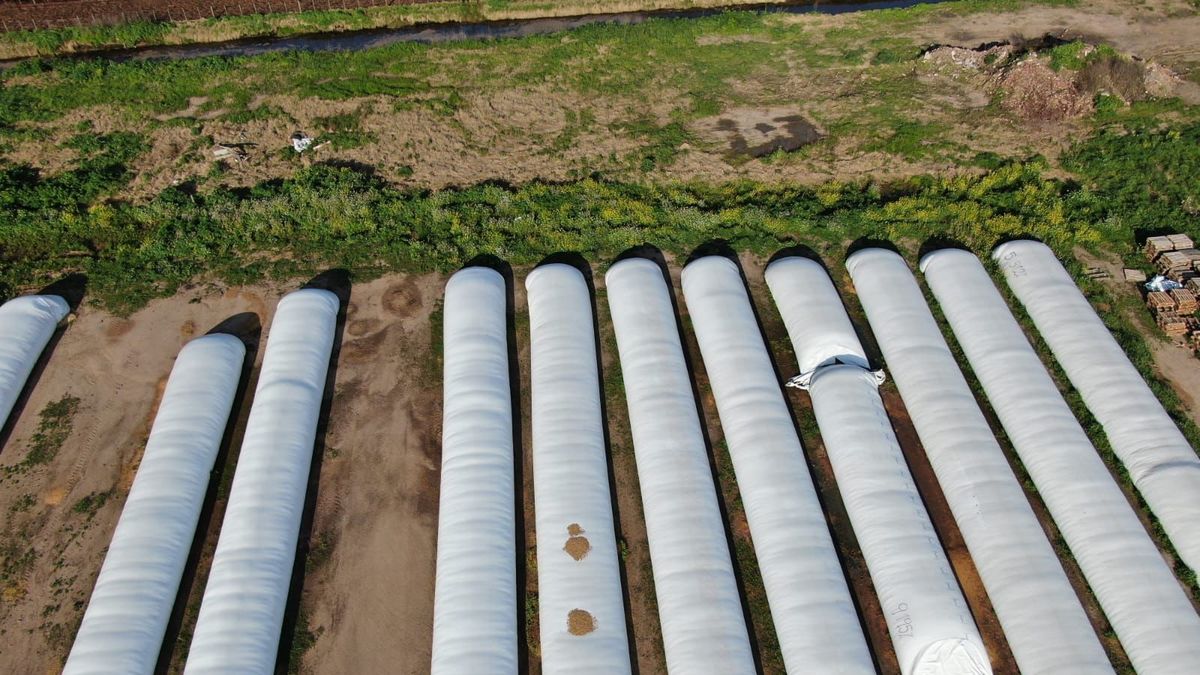Behind a very blockbuster discussion at this time, whether the dollar “is behind or not”, a key event for the Government’s plans is being resolved: the liquidation of the coarse harvest.
In dialogue with Ambitthe president of the Chamber of the Oil Industry of the Argentine Republic and of Cereal Exporters Center, Gustavo Idígoras, He got fully involved in that debate. He assured that “the grain market needs a better price” and pointed out that it could occur “due to special conditions, a devaluation jump or export duties,” and that “the Government will have to decide that based on its needs.” ”.
Although the Government assures that in the coming days the sector will “shower the Central Bank with dollars”, Gustavo Idígoras considered that “more than a torrential rain we are going to see a weekly trickle of dollars because the conditions of prices” and announced: “The 100 million tons that we have to mobilize will only leave the fields, the stockpiles and the cooperatives if we get a better price.”
Gustavo Idígoras.jpg
Courtesy Campo in action
Q: How do you see the panorama in the agroindustrial sector?
Gustavo Idigoras: We come from a year 2023 that was the worst of the last 70 years with US$ 20 billion in losses from export contracts and therefore production, especially of soybeans, corn and some wheat, which generated a drama in the agroindustrial chain. 2024 looks better. We have a good harvest prospect starting in April for soybeans and corn. More than 46 million tons for corn and more than 50 million for soybeans, when last year we had about 20 million tons of soybeans, and between 36 and 37 million in the case of corn.
Q: And how much about prices?
G.I.: International prices have fallen a lot. Brazil had a super harvest like last year and Argentina improved its performance. The two countries greatly influence international prices and have caused them to go down. That is bad data because it was planted at a much higher price and will be harvested at a lower price.
Q: The drop in prices in general delays sales…
GI: The flow of sales to the export market has decreased in comparative terms with recent years with similar harvests. The dollars may be there, but it seems to me that not with the flow that the Government initially expected. It will probably be about US$30 billion but over a longer period of months.
Q: How do you estimate that flow will be distributed?
GI: We are going to see a fairly similar trend, a flattened curve. All this in the producers’ expectation of seeing a better price.
Q: The Government says it is very sure that in the coming months the agribusiness will “shower” the Central Bank with dollars…
GI: More than a torrential rain, we are going to see a weekly trickle of dollars; the price conditions are not in place to anticipate such a large flow. That does not mean that we do not see an improvement in the number of trucks that go to the ports and in the shipments made because a harvest of 100 million tons must be mobilized, but clearly we do not see it in April and May, unless macro conditions change. , an influx beyond what we are seeing right now.
Q: What has to happen for sales to accelerate?
GI: The grain market needs a better price. That is an objective fact of reality. These 100 million tons that we have to mobilize will only leave the fields, the stockpiles and the cooperatives if we get a better price. If that price is given due to special conditions, due to a devaluation jump or due to a reduction in export duties, the Government will have to decide that based on its needs.
Q: Is the dollar behind?
GI: When it started, the Government made the decision to sharply jump the official exchange rate. In addition, it determined an export and an import exchange rate, the exporter went to $850 and today it is around $890, but we were already coming from a dollar differential close to $700 so the jump was greater in imports with the effect of the Country Tax. Although there is no complete and direct relationship between the final value of the harvest and inputs, Argentina remains dependent, particularly on fertilizers for around 50% of its needs. If we add to that the inflation of all these months, clearly the export exchange rate is not keeping up with the inflationary rhythm.
Q: And what consequences does it have?
GI: The producer observes it and makes sales decisions based on the price it has. Many try to look for a better condition in the future. Unless that future condition does not exist and the Government provides that guarantee that it will not exist in the coming months. In that case, the producer will probably review his situation and sell the grains. But now the President himself has been proposing an exchange rate unification, we encourage it because having multiple exchange rates is never good for the economy and even less so for foreign trade, but that generates an expectation of a devaluation jump.
Q: But the Government insists that there will be no devaluation…
GI: The Government has told us on many occasions that they do not see an upward convergence but rather a downward adjustment, but well, we are in Argentina, in 50 or 60 years of history we have not seen an exchange rate unification go to
Source: Ambito




